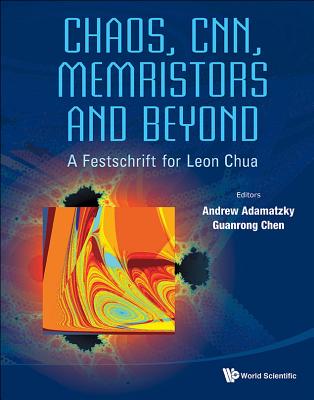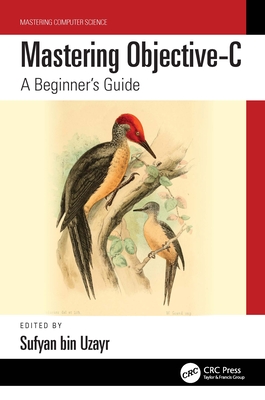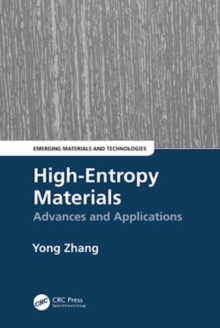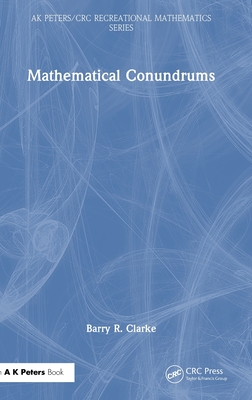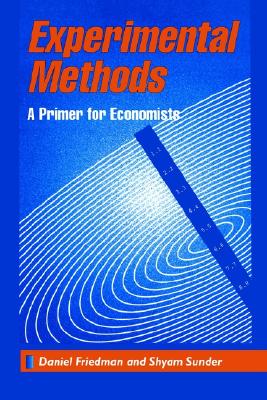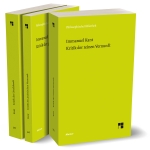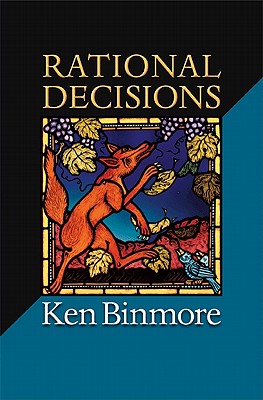图书简介
This invaluable book is a unique collection of tributes to outstanding discoveries pioneered by Leon Chua in nonlinear circuits, cellular neural networks, and chaos. It is comprised of three parts. The first — cellular nonlinear networks, nonlinear circuits and cellular automata — deals with Chua’s Lagrangian circuits, cellular wave computers, bio-inspired robotics and neuro-morphic architectures, toroidal chaos, synaptic cellular automata, history of Chua’s circuits, cardiac arrhythmias, local activity principle, symmetry breaking and complexity, bifurcation trees, and Chua’s views on nonlinear dynamics of cellular automata. Dynamical systems and chaos is the scope of the second part of the book, where we find genius accounts on theory and application of Julia set, stability of dynamical networks, chaotic neural networks and neocortical dynamics, dynamics of piecewise linear systems, chaotic mathematical circuitry, synchronization of oscillators, models of catastrophic events, control of chaotic systems, symbolic dynamics, and solitons. First hand accounts on the discovery of memristors in HP Labs, historical excursions into ‘ancient memristors’, analytical analysis of memristors, and hardware memristor emulators are presented in the third and final part of the book.
The book is quintessence of ideas on future and emergent hardware, analytic theories of complex dynamical systems and interdisciplinary physics. It is a true Renaissance volume where bright ideas of electronics, mathematics and physics enlighten facets of modern science.
The unique DVD covers the artistic aspects of chaos, such as several stunningly melodious musical compositions using chaotic atttractors, a virtual gallery of hundreds of colorful attractors, and even a cartoon-like play on the genesis of Chua’s circuit that was based on a widely acclaimed performance in Rome and other venues in Italy. In short, it is a veritable kaleiscope of never-before-published historical, pedagogical, and futuristic technical visions on three timely topics of intense interest for both lay readers and experts alike.
Key Features:
• Unique personality of Leon Chua and enormity of his achievements underpins the structure of the book
• Conglomerate of hot topics: memristors, chaos, computational focus
• Original papers from renown scholars and researchers as well as numerous tutorials and historical expositions on each of the topics
• High pedagogical value makes the book a timeless reference
Cellular Nonlinear Networks, Nonlinear Circuits and Cellular Automata: Genealogy of Chua’s Circuit (Peter Kennedy); Impasse Points, Mutators, and Other Chua Creations (Hyongsuk Kim); Chua’s Lagrangian Circuit Elements (Orla Feely); From CNN Dynamics to Cellular Wave Computers (Tamas Roska); Contributions of CNN to Bio-Robotics and Brain Science (P Arena and L Patané); From Radio-amateurs’ Electronics to Toroidal Chaos (Otto E Rössler and Christophe Letellier); Analyzing the Dynamics of Excitatory Neural Networks by Synaptic Cellular Automata (V Nekorkin, A Dmitrichev, D Kasatkin and V Afraimovich); Dynamical Systems Perspective of Wolfram’s Cellular Automata (M Courbage and B Kamińki); The Genesis of Chua’s Circuit: Connecting Science, Art and Creativity (F Bertacchini, E Bilotta, G Laria and P Pantano); Nonlinear Electronics Laboratory (NOEL): A Reminiscence (Chai Wah Wu); Bursting in Cellular Automata and Cardiac Arrhythmias (Gil Bub, Alvin Shrier and Leon Glass); Local Activity Principle: The Cause of Complexity and Symmetry Breaking (Klaus Mainzer); Explorations in the Forest of Bifurcation Trees: Route from Chua’s circuit to Chua’s Memristive Oscillator (Lukasz Czerwiński and Maciej J Ogorzalek); Chua’s Nonlinear Dynamics Perspective Cellular Automata (Giovanni E Pazienza); Application of CNN to Brainlike Computing (Bertram E Shi); Ideal Turbulence Phenomenon and Transmission Line with Chua’s Diode (E Yu Romanenko and A N Sharkovsky); Dynamical Systems and Chaos: Connectivity of Julia Sets for Singularly Perturbed Rational Maps (Robert L Devaney and Elizabeth D Russell); Structural Transformations and Stability of Dynamical Networks (L A Bunimovich and B Z Webb); Chua’s time (Arturo Buscarino, Luigi Fortuna and Mattia Frasca); Chaotic Neural Networks and Beyond (K Aihara, T Yamada and M Oku); Chaotic Neocortical Dynamics (Walter J Freeman); Nonlinear Dynamics of a Class of Piecewise Linear Systems (M Lakshmanan and K Murali); Chaotic Mathematical Circuitry (R Lozi); Chua’s Equation was Proved to be Chaotic in Two Years, Lorenz Equation in Thirty Six Years (Bharathwaj Muthuswamy); Toward a Quantitative Formulation of Emergence (G Nicolis); Controlled Synchronization of Chaotic Oscillators with Huygens’ Coupling (J Peńa-Ramírez, R H B Fey and H Nijmeijer); Using Time-Delay Feedback for Control and Synchronization of Dynamical Systems (K Pyragas, V Pyragas and T Pyragienė); Models of Catastrophic Events and Suggestions to Foretell Them (Yves Pomeau and Martine Le Berre); Synchronization Propensity in Networks of Dynamical Systems (Stefano Fasan and Sergio Rinaldi); Further Progress in Partial Control of Chaotic Systems (Miguel Sanjuan); Phase and Complete Synchronizations in Time-Delay Systems (D V Senthilkumar, M Manju Shrii and J Kurths); Symbolic Dynamics and Spiral Structures due to the Saddle-Focus Bifurcations (Andrey Shilnikov, Leonid Shilnikov and Roberto Barrio); Dynamics of Periodically Forced Mass Point on Constrained Surface with Changing Curvature (Yoshisuke Ueda); Solitons for Describing 3-D Physical Reality: The Current Frontier (Paul J Werbos); Thermal Solitons in 1D and 2D Anharmonic Lattices — Solectrons and the Organization of Non-Linear Fluctuations in Long-Living Dynamical Structures (M G Velarde, W Ebeling, A P Chetverikov); Global Optimizations by Intermittent Diffusion (Shui-Nee Chow, Tzi-Sheng Yang and Hao-Min Zhou); Memristors: How We Found the Missing Memristor (R Stanley Williams); Aftermath of Finding the Memristor (R Stanley Williams); The Singing Arc: The Oldest Memristor? (Jean-Marc Ginoux and Bruno Rossetto); Two Centuries of Memristors (Themistoklis Prodromakis); State Equations for Active Circuits with Memristors (Martin Hasler); Analytical Analysis of Memristive Networks (Torsten Schmidt, Willi Neudeck, Ute Feldmann and Ronald Tetzlaff); Hardware Memristor Emulators (Andrew L Fitch, Herbert H C Iu and Chi K Tse); Leon Chua’s Memristor (Guanrong Chen).
Trade Policy 买家须知
- 关于产品:
- ● 正版保障:本网站隶属于中国国际图书贸易集团公司,确保所有图书都是100%正版。
- ● 环保纸张:进口图书大多使用的都是环保轻型张,颜色偏黄,重量比较轻。
- ● 毛边版:即书翻页的地方,故意做成了参差不齐的样子,一般为精装版,更具收藏价值。
关于退换货:- 由于预订产品的特殊性,采购订单正式发订后,买方不得无故取消全部或部分产品的订购。
- 由于进口图书的特殊性,发生以下情况的,请直接拒收货物,由快递返回:
- ● 外包装破损/发错货/少发货/图书外观破损/图书配件不全(例如:光盘等)
并请在工作日通过电话400-008-1110联系我们。
- 签收后,如发生以下情况,请在签收后的5个工作日内联系客服办理退换货:
- ● 缺页/错页/错印/脱线
关于发货时间:- 一般情况下:
- ●【现货】 下单后48小时内由北京(库房)发出快递。
- ●【预订】【预售】下单后国外发货,到货时间预计5-8周左右,店铺默认中通快递,如需顺丰快递邮费到付。
- ● 需要开具发票的客户,发货时间可能在上述基础上再延后1-2个工作日(紧急发票需求,请联系010-68433105/3213);
- ● 如遇其他特殊原因,对发货时间有影响的,我们会第一时间在网站公告,敬请留意。
关于到货时间:- 由于进口图书入境入库后,都是委托第三方快递发货,所以我们只能保证在规定时间内发出,但无法为您保证确切的到货时间。
- ● 主要城市一般2-4天
- ● 偏远地区一般4-7天
关于接听咨询电话的时间:- 010-68433105/3213正常接听咨询电话的时间为:周一至周五上午8:30~下午5:00,周六、日及法定节假日休息,将无法接听来电,敬请谅解。
- 其它时间您也可以通过邮件联系我们:customer@readgo.cn,工作日会优先处理。
关于快递:- ● 已付款订单:主要由中通、宅急送负责派送,订单进度查询请拨打010-68433105/3213。
本书暂无推荐
本书暂无推荐
